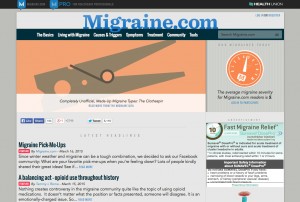Most pharmaceutical marketers understand the importance of including search marketing in their media plans. Often the champion of the final click, a good paid search campaign contributes to the overall success of any advertising effort and connects your brand to active seekers within the marketplace. Unfortunately, advertisers often focus the majority of their attention on the brand.com site and, at times, overlook the importance role disease awareness (DA) sites play within search strategy through enabling the option of executing a multiple listing strategy.
Let’s take a step back and look at how a good DA site provides marketers with the opportunity to better capitalize search results.
But… what if I’m not first-to-market?
I know what you’re thinking – unless you’re at the helm of a first-to-market treatment, you’re probably thinking that a DA site just doesn’t fit your strategy. Certainly first-to-market competitors have a great opportunity to educate and grow interest in a category for patients and HCPs with an awareness site. However, the opportunity to influence this audience on a condition or disease state exists for more than just the first-to-market competitor. Unbranded education content generally resonates strongly with audiences wary of an overtly branded message and provides marketers with a forum to set the stage for a branded message to follow at a later point in time.
What’s more, a proper DA site need not be overly complex or represent the pinnacle in site design to be effective. Instead, focus investment on good, quality content that stands out from the crowd and strikes a new position on the condition. Savvy digital marketers can take this opportunity to set the table and influence what patients and HCPs should expect or demand from the category. Following on-brand messages can then reinforce differentiation to maximize this added perception. Examples of differentiation can include cost, safety, or even dosage and delivery (e.g., why take an injection when treatment is available via pill).
Finally, DA sites generally resonate better than brand.com sites for unbranded search campaigns. Diagnostic indicators of post-click success – including bounce rate, page views per visit, and even time on site – generally return stronger numbers when an unbranded searcher consumes DA content. With the right site design and layout, the engaged audience can be converted to the brand.com site and ultimately shaped to take the action the advertiser desires.
Once advertisers commit to adding a DA site to the portfolio, a multiple listings approach can be pursued within search. Below, I’ve broken out what makes this tactic so powerful for search advertisers.
Competitive blocking
This additional listing provides added flexibility to advertisers looking to provide active seekers with as many opportunities as possible to connect with their brand and their message. You may already be following this strategy without knowing it – having a separate website for HCPs and patients enables a second listing to populate the search results with a message unique to each audience. The DA site furthers this approach and provides the opportunity to reach both audiences who may be higher up the funnel.
Some advertisers truly embrace the multiple listing approach and create separate DA sites for patients and HCPs, creating yet another additional search listing. The possibilities are endless!
Added coverage and efficiency
Employing a multiple listing strategy provides a great way to even the playing field against competitors with deep pockets determined to remain in the top position. Added listings provide added impression share and SOV opportunities at greater efficiency than an all-or-nothing approach to search positioning (which is why I always advocate employing a separate domain for your patient and HCP brand sites).
If each of your site properties achieves even a 15% impression share, you can quickly begin accruing over half of the available search opportunity without spending the same cost per visitor that you would with fewer listings forced to remain at the top to ensure traffic volume forecasts are achieved.
Flexible messaging opportunities
Multiple listings provide advertisers with greater opportunities to determine the optimal investment levels within search. What’s more, using a test-and-learn approach often reveals which unbranded categories make sense to drive directly to brand.com and which respond better to the unbranded table setting of your DA site – and of course, which terms should have the opportunity to drive to both!
Know thy funnel
Many brand managers regard the branded site as the best chance to engage patients and HCPs. Unfortunately, speaking to a brand naïve audience searching on general condition terms via a branded site usually leads to poor engagement and a questionable user experience. Since we know that qualified patients and HCPs tend to search using basic, single-phrase keywords, it remains difficult to assume what level of brand awareness a searcher has based on the keyword they input.
Disease awareness websites play a critical role in successfully engaging patients and HCPs who may remain higher up in the conversion funnel. Multiple listings provide the opportunity to not only engage in message testing but also audience A/B testing. Which site property makes the most sense for these keywords and ad groups?
Creating a DA site provides brand managers with added flexibility in how they create and execute their paid search campaigns. Having the advantage of added listings in the search results allows advertisers the opportunity to customize their messaging and audience alignment approach at a much more granular level, all while returning greater efficiency and engagement.







